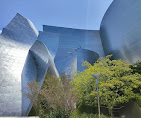(2023)
Upon receiving Maestro Gustavo Dudamel’s request to compose a work inspired by Cervante’s Don Quijote de la Mancha, I found myself transported to my childhood years in Portugal when I first encountered the adventures of the ingenious hidalgo. As I started composing, I could not stop reflecting on how one of the most enduring images that stayed with me is that of the procession, a theme that recurs throughout Don Quijote.
In Cortejo I strove to conjure elements of Iberian processions—ritual and communal, religious and pagan, celebratory and mournful—witnessed throughout my life. My father, who taught me to value the vast array of Iberian traditions, was a medievalist, scholar, professor, and poet. He was also the director of the Centro de Tradições Orais Portuguesas (Center for Portuguese Oral Traditions) at the University of Lisbon, and I therefore grew up immersed in our Iberian popular traditions: prayers, fantastic tales, cures, songs—and processions. Thus composing this piece has offered me a unique opportunity to blend my own recollections and compositional voice with the fantastic world of Iberian traditions in which Don Quijote figures so prominently.
During the writing process, I turned to a description of one of the processions in Don Quijote “el cortejo de los sabios” (“the procession of the wise men”). Cortejo is divided into six episodes, each inspired by a particular word in “el cortejo de los sabios” and depicting a distinct musical landscape. The episodes follow a procession-like cyclical structure and are played without pause.
I. Procesión: An initial tutti orchestral section opens the work in a spark of celebration, guided by the snare drum.
II. Claroscuro (light and darkness): The celebratory procession is suddenly interrupted by layers of strings representing light. A distant musical landscape ensues, interrupted by the low winds and brass, as well as by the piano and percussion (whose music represents darkness). Flashbacks of the procession return in the brass as a passage of sharp contrasts, hinting at the hidalgo’s obscure dreams.
III. Procesión: The procession features a call and answer between the solo oboe and wind ensemble, playing a recurring melody in unison that is abruptly interrupted by sharp orchestral outbursts.
IV. Claroscuro returns, this time beginning with the wind ensemble mirroring string harmonies from the previous claroscuro episode. Interspersed with fragments of the procession, this episode eventually builds to an orchestral tutti, only to disintegrate as if in a dream. A short dialogue between the English horn and harp concludes the episode.
V. Infinitas luces (Infinite Lights): This most lyrical and delicate of the episodes features the chords previously played by the piano and percussion, which reappear, newly orchestrated in the winds, while the high strings play a lontano melody. In the dark sky above, the stars seem to dissipate while the orchestra plays downward glissandi, “las estrellas que corren”, as Cervantes describes them. A cloud of shimmering percussion concludes the episode.
VI. Reencuentros (Reencounters): The end of the procession nears, as elements from the five previous episodes reemerge, meld, mirror each other, then vanish abruptly as if waking from a dream.
